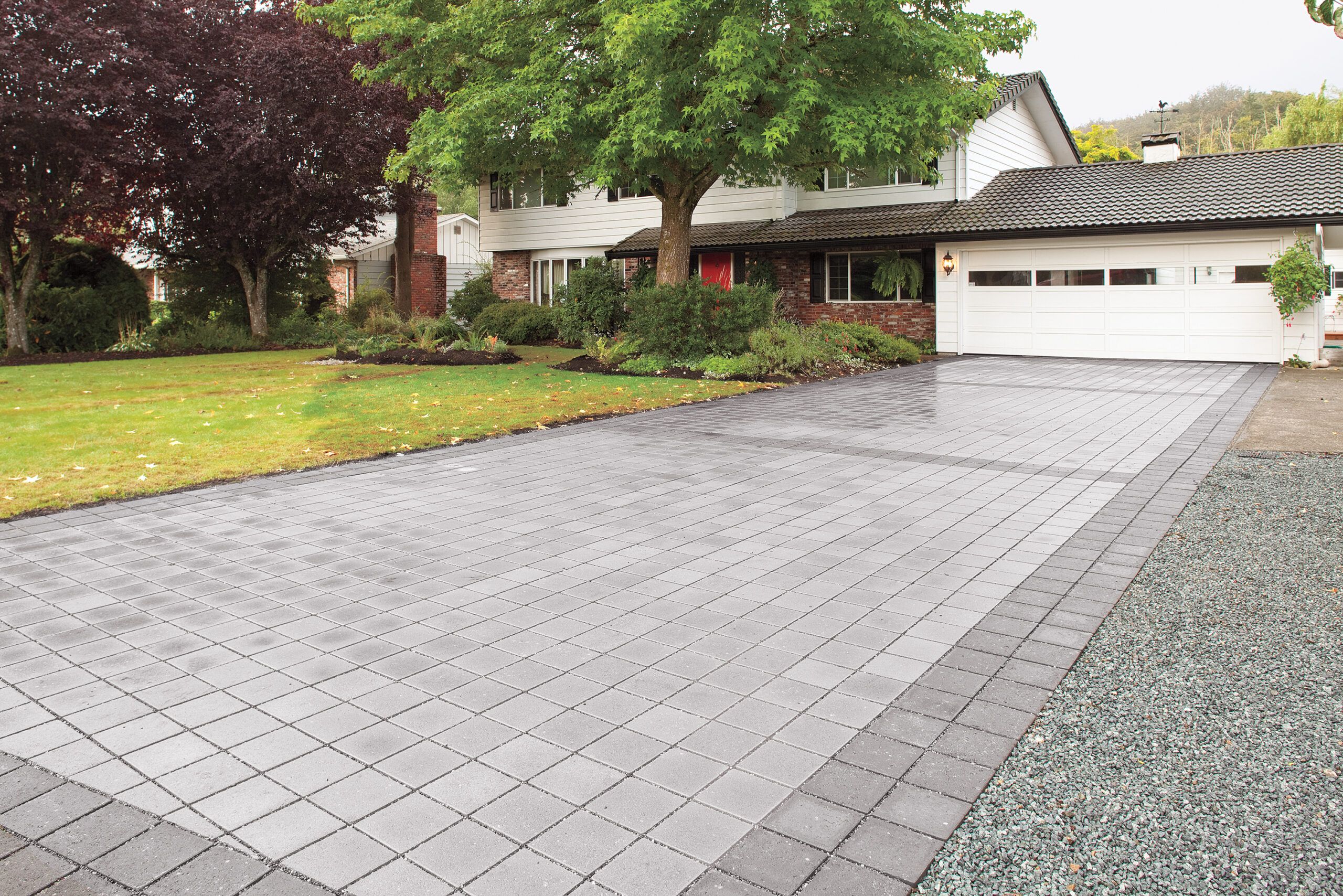Project details
Skill
Cost
Estimated Time
Q: I need to have my driveway redone. Is there a surface more environmentally friendly than asphalt or concrete?
—Lisa Matthews, Madison, N.J.
Troy Johnson of Outdoor Escapes replies: The best way to green up a driveway is to install permeable pavers, which allow water to drain down through the gaps between them and into a bed of crushed stone. From there, it seeps gently into the soil. Contrast that with a typical driveway, where water picks up oil and other chemicals as it washes into the street, overloading storm drains, polluting waterways, and increasing the chances of flooding from runoff.
The pavers are made of brick, stone, or, like here, concrete, but they’ll work only if laid over a properly installed base. For a job of this scale, hire a pro with permeable-paver experience; smaller projects, like a path or patio, are fair game for do-it-yourselfers (DIYers). Either way, regular maintenance is a must: Plan on sweeping or vacuuming the joints at least once a year to prevent them from becoming clogged with leaves and debris and acting just like your old driveway.
Shown in the photo above: This driveway can absorb at least 10 inches of rain per hour, about twice the intensity of the heaviest 100-year downpour in the U.S.
What Is a Permeable Paver Driveway?
Permeable paver driveways consist of interlocking units made from durable materials like concrete, brick, or natural stone. Unlike traditional pavers, they feature wider joints or openings that allow water to pass through into a base of crushed stone. This helps manage stormwater runoff while providing a durable surface for vehicles.
Water filters through the pavers into the ground, removing pollutants before the water reaches rivers and streams. This process helps replenish groundwater supplies and reduces the burden on municipal storm sewer systems. Permeable pavers can also help prevent flooding and erosion, making them an excellent choice for areas prone to heavy rainfall or poor drainage.
Planning Your Permeable Paver Driveway
Though permeable paver driveways offer many benefits for homeowners, they may not suit every home. Before installing a permeable paver driveway, you should complete the following assessments to determine your soil’s absorption rate, materials required, and any local permits needed for installation.
In most cases, you’ll hire a contractor for the project who will handle these steps.
Assess Soil Conditions
Do a percolation test to determine your soil’s infiltration rate. This test measures how quickly water absorbs into the ground and will help determine if your soil absorbs water effectively or if additional drainage measures may be necessary, such as a deeper base or underground storage. For guidance on performing a proper percolation test, consult a local civil engineer, geotechnical professional, or landscape architect experienced in stormwater management. These experts can provide site-specific advice and ensure compliance with local regulations.
Calculate Materials Needed
Take accurate measurements of your driveway area to estimate the amount of pavers, base materials, and other supplies needed. For a typical driveway, you’ll need various sizes of crushed stone for the base layers and bedding, as well as the pavers themselves. Factor in extra materials for cuts and waste.
Obtain Necessary Permits
Check with your local building department to determine if you need specific permits for your driveway project. Some areas may have specific regulations regarding permeable surfaces or driveway construction. Complete all necessary permit applications and wait for approval before starting your project.
Essential Tools and Materials for a Permeable Paver Driveway
We’ve listed all the tools and materials needed for your permeable paver installation project below.
Tools
- Excavator or skid steer (for large projects)
- Plate compactor
- Wheelbarrow
- Shovels and rakes
- Level and string line
- Rubber mallet
- Concrete saw or paver splitter
- Push broom
Driveway Base Materials
- 3/4- to 2-inch washed crushed stone for the bottom layer
- 1/4- to 1-1/2-inch washed crushed stone for the middle layer
- 1/4-inch stone for the bedding layer and joint filling
How to Install a Permeable Paver Driveway
While installing this type of driveway isn’t really a DIY project, understanding the steps involved will help you find the best contractor for the job. If you have the right experience and crew, you might consider taking on this type of project on a small scale.
Step 1: Mark and Excavate the Site
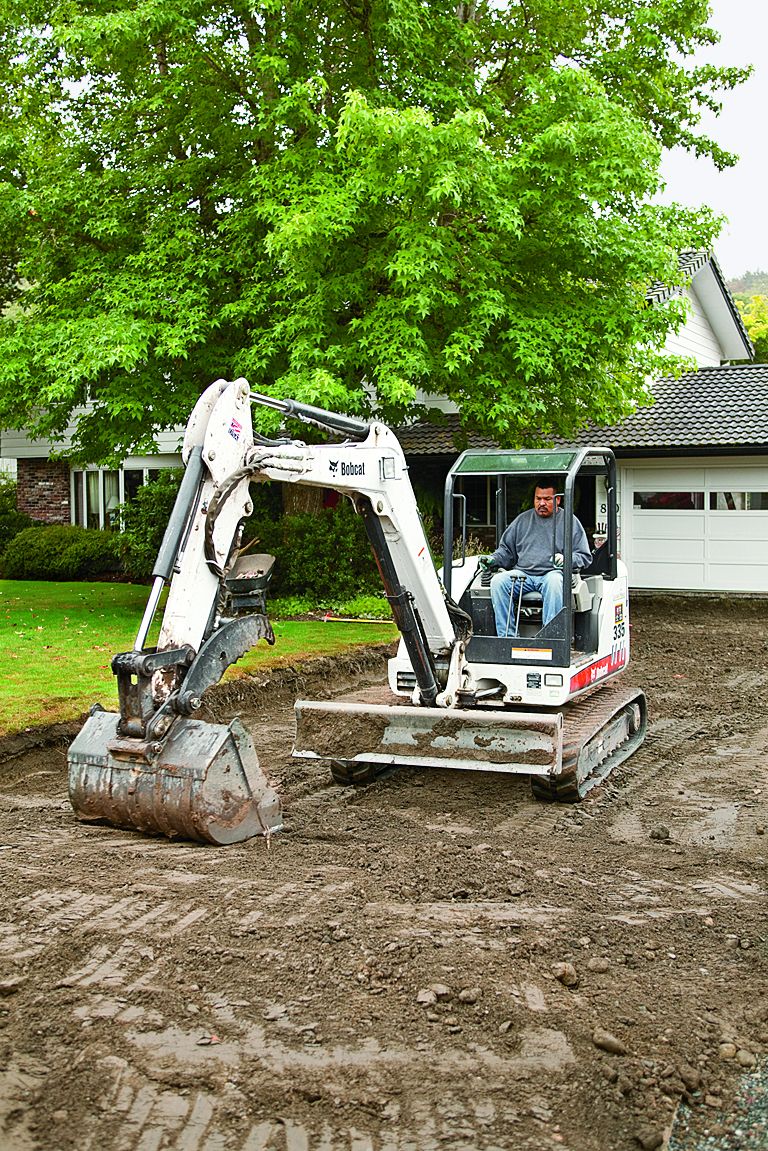
We recommend calling 811 to have underground utilities marked before beginning your project. Next, clearly mark the boundaries of your new driveway. Use stakes and string to outline the area, ensuring it meets local setback requirements and aligns with your property’s landscape.
When ready to dig, remove the existing surface and dig to the required depth. For most permeable paver driveways, excavate to a minimum depth of 15 inches. However, you may need to dig deeper or consider installing additional drainage systems to deal with stormwater.
Step 2: Laying the First Crushed Stone Layer
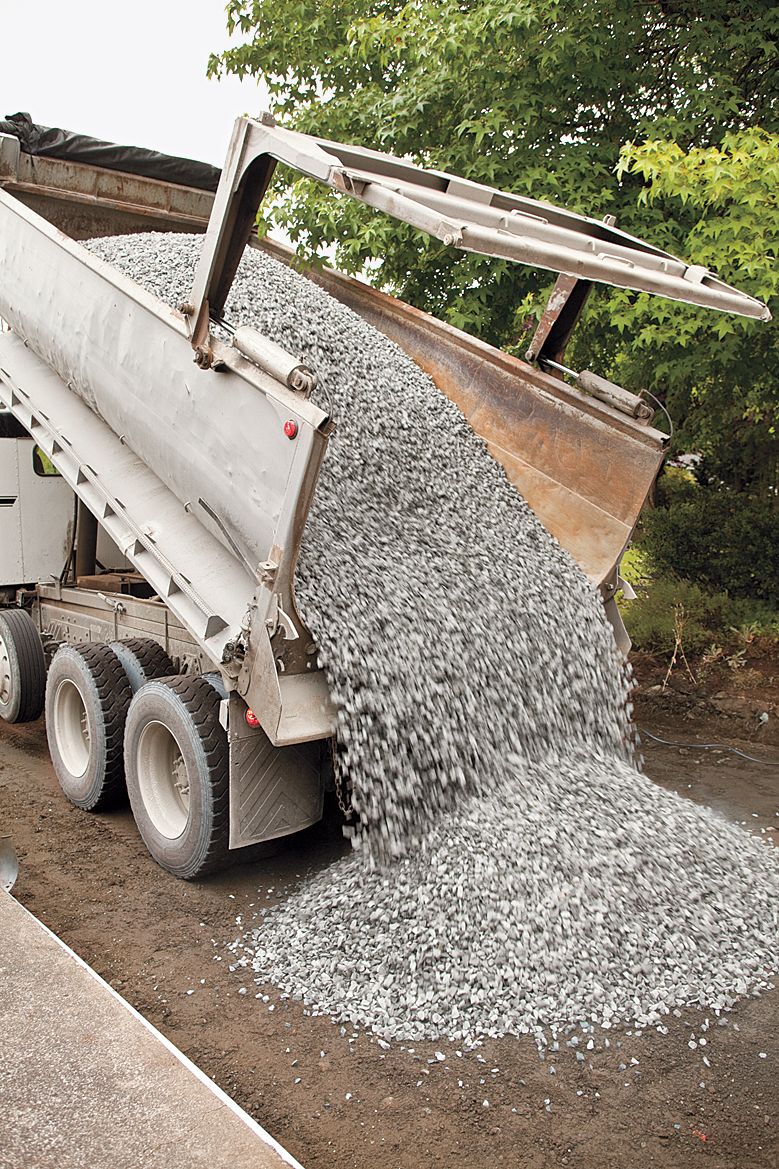
Start with a 6-inch layer of 3/4-inch to 2-inch washed crushed stone. This larger stone creates a stable base and allows for excellent water flow. Spread the stone evenly across the excavated area, ensuring a consistent depth throughout.
After the initial layer, add a 4-inch layer of 1/4- to 1-1/2-inch washed crushed stone. Use a plate compactor to compact each layer thoroughly, making two passes in different directions (across and lengthwise) to ensure proper settling. This compaction is crucial for preventing future settling and maintaining the driveway’s level surface.
Step 3: Screed the Bedding Layer
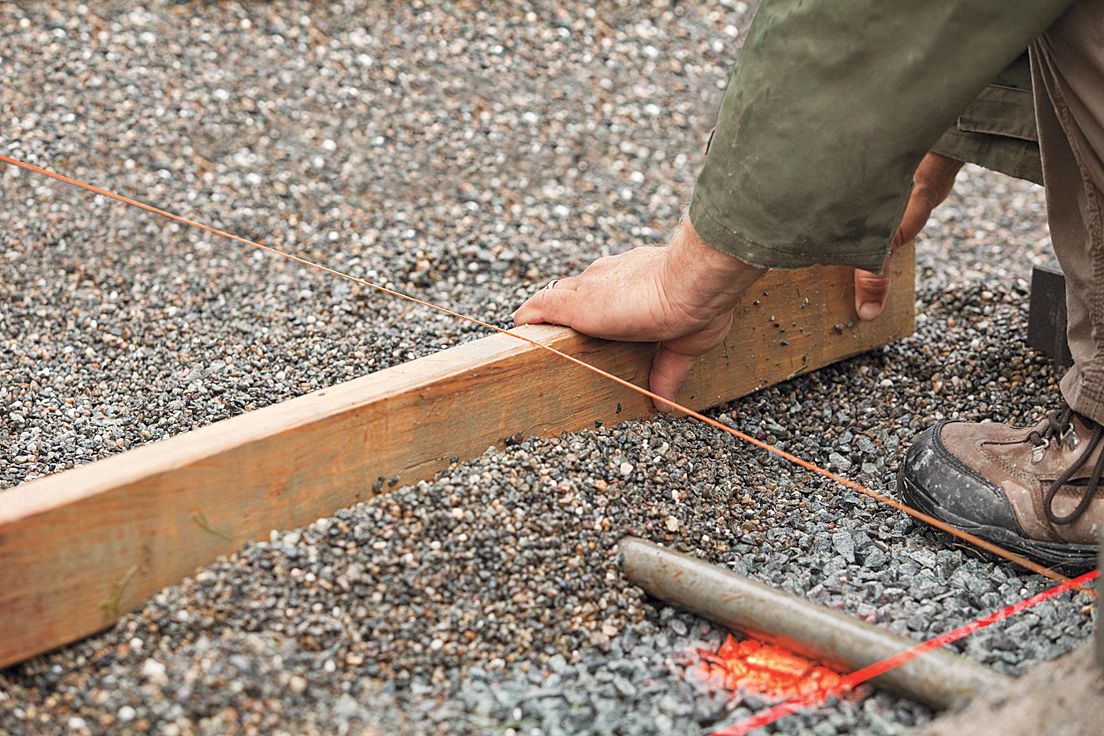
The final base layer is the bedding layer, which provides a smooth surface for setting the pavers. Install a concrete or hard-plastic edging to keep the pavers from shifting. Use two 2-inch-diameter steel pipes placed about 6 feet apart as guides. Cover these with 1/4-inch stone, then use a 2×4 as a screed board to create a flat, even surface. Remove the pipes and fill in the gaps, repeating this process across the driveway.
Step 4: Place the Pavers
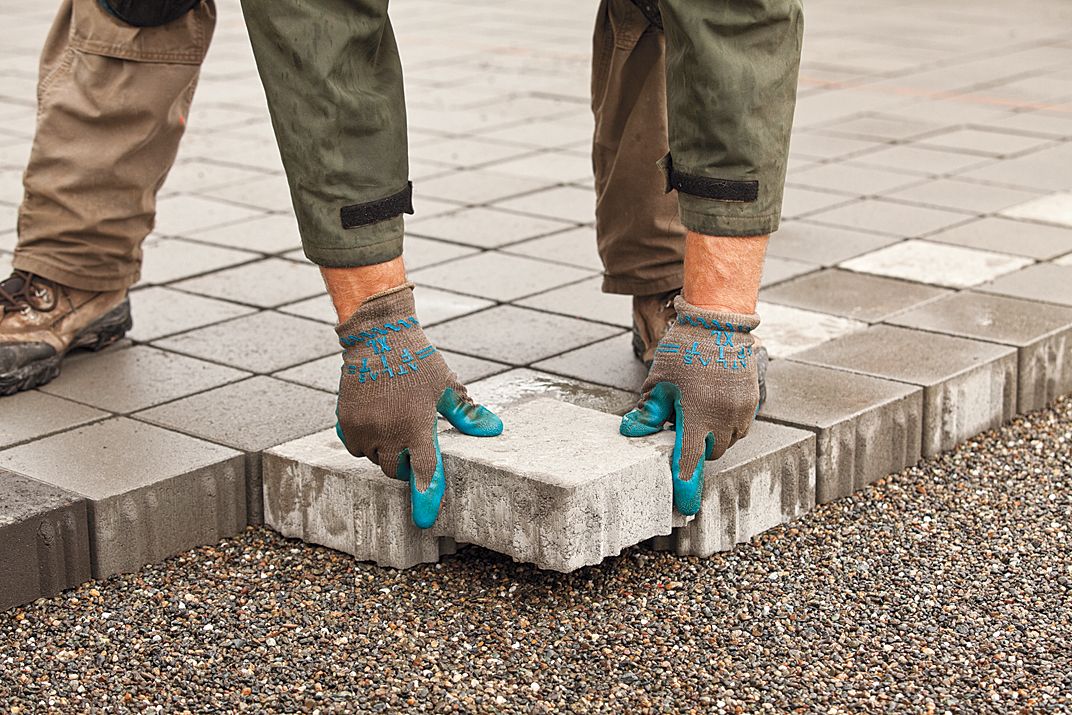
Begin at the lowest corner of your driveway, place the pavers tightly against the edging and each other, following your chosen pattern. Many permeable pavers have small nibs on their sides that automatically create the necessary drainage gaps. Check every 6 to 10 feet to make sure the pavers are square to the first row.
Place all the full-size pieces, then go back and cut pieces to fit in any gaps along the edges. Cut pavers to fit around edges, curves, and obstacles for a polished look. Use a concrete saw or paver splitter for precise cuts.
Step 5. Fill the Joints Between Pavers
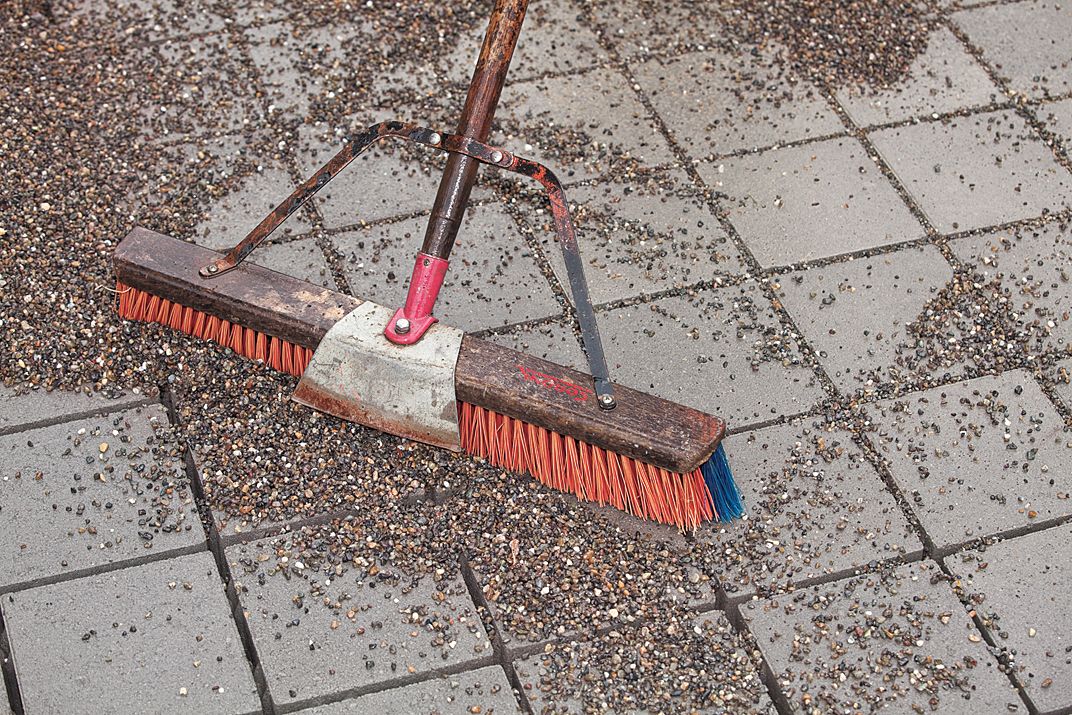
Once all pavers are in place, fill the joints with 1/4-inch stone, the same material used in the bedding layer. Spread the stone over the surface and use a wide push broom to sweep it into the gaps. Sweep diagonally across the grid to avoid dislodging stones already in the joints.
Step 6: Tamp the Installed Pavers
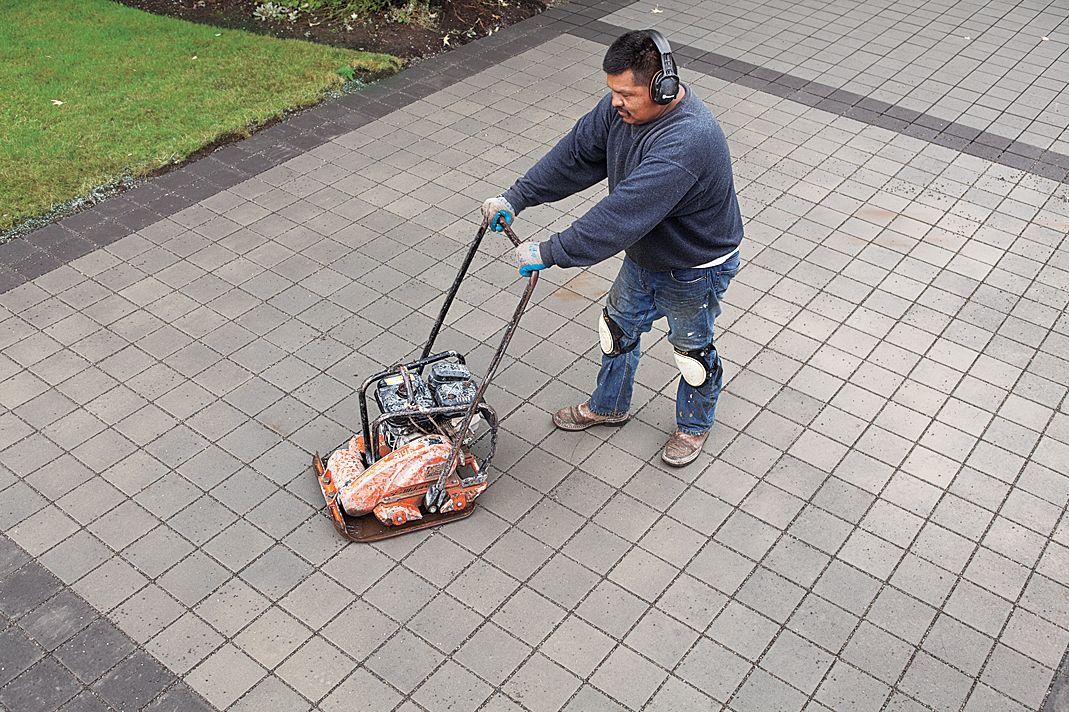
After filling the joints, sweep the surface clean. Then, run a plate compactor diagonally over the entire driveway surface. This vibration settles the pavers firmly into the bedding layer and locks them in place. Make multiple passes to ensure thorough compaction. After compacting, refill any joints that have settled deeply and compact again.
If not already done, consider installing additional edging along the sides to secure your driveway and create a better driveway border. This step prevents the outer pavers from shifting over time and gives your driveway a clean, finished look.
Permeable Paver Driveway Maintenance and Care
Regular care and maintenance help preserve the appearance of your permeable paver driveway and maintain its water runoff efficiency for years to come. Follow the steps below to properly maintain your driveway.
Clean Driveway Annually
Sweep or vacuum the driveway at least once a year to prevent leaves and debris from clogging the joints. For more thorough cleaning, use a pressure washer on a low setting, being careful not to dislodge the joint material. Avoid using chemical cleaners that could harm the environment or affect the driveway’s permeability.
Prevent Weed Growth
While permeable pavers typically discourage weed growth, some may still appear in the joints. Remove weeds by hand or use an environmentally friendly herbicide. Regularly refilling the joints with the appropriate stone can also help prevent weed growth.
Repair Damaged Permeable Pavers
You can repair a paver driveway by replacing individual pavers and avoid disturbing the entire driveway. Carefully remove the damaged paver and any surrounding joint material, replace it with a new one, and refill the joints.
Factors Affecting Permeable Paver Installation Costs
Permeable paver driveways cost an average of $10–$40 per square foot, depending on the type of paver material.* This equates to a total cost of $4,800–$19,200 for a typical driveway. We’ve outlined some key cost factors below.
- Size of the driveway: You pay higher material and labor cost for a larger paver driveway.
- Type and quality of pavers chosen: Materials like stone cobblestone cost more than grass or brick options.
- Complexity of the installation site: More difficult or complex installations will require added labor, increasing your project costs.
- Additional drainage needs: If your soil has poor absorption, you need to pay more for supplemental drainage material.
- Labor costs: Total labor costs vary in different areas and can depend on available installers, cost of living rates, and demand for driveaway installation services.
*Cost data sourced from Angi.
Long-Term Costs and Benefits
While the initial investment may be higher than traditional asphalt or concrete, permeable paver driveways offer the following long-term cost benefits:
- Reduced need for stormwater management systems
- Lower maintenance costs over time
- Potential increase in property value
- Possible reduction in water bills or stormwater fees in some municipalities
DIY vs. Professional Installation
Though DIY installation can save on labor costs, this project requires significant time, effort, and skill. Most DIYers don’t have the skills to complete such a complex and taxing installation. You also need specialized equipment that you may be unfamiliar with operating. This lack of knowledge and experience could lead to an improper installation, resulting in property damage and additional repair expenses.
We recommend hiring a company with experience in permeable paver installation. Though you’ll pay more for professional services, they can ensure proper base preparation, accurate drainage grading, and correct paver placement.
Troubleshooting Permeable Paver Driveway Issues
Even with careful installation, your permeable paver driveway may encounter some issues over time. Here are some common problems you could face with your driveway.
Poor Drainage
If you notice standing water or slow drainage, the joints may be clogged. Clean the surface thoroughly and consider using a vacuum specifically designed for permeable pavers to remove debris from deep within the joints.
Uneven Surfaces
Uneven areas can develop due to settling or improper base preparation. For minor unevenness, try removing the affected pavers, adjusting the bedding layer, and relaying the pavers. For significant issues, we recommend consulting a professional.
Paver Shifting
To prevent pavers from shifting, ensure proper edging is in place around the perimeter of your driveway. Regularly inspect and maintain these edges, replacing or reinforcing them as needed.
Our Conclusion
Permeable paver driveways enhance your property’s curb appeal while contributing to a more sustainable environment. Because these driveways require excellent soil infiltration, we recommend doing proper soil testing and planning for any necessary drainage upgrades.
Due to the complexity of installation, you should consider a professional specializing in permeable paving systems. While the process requires careful planning and execution, the result is a durable, attractive, and eco-friendly driveway surface that can last for decades with proper maintenance.
